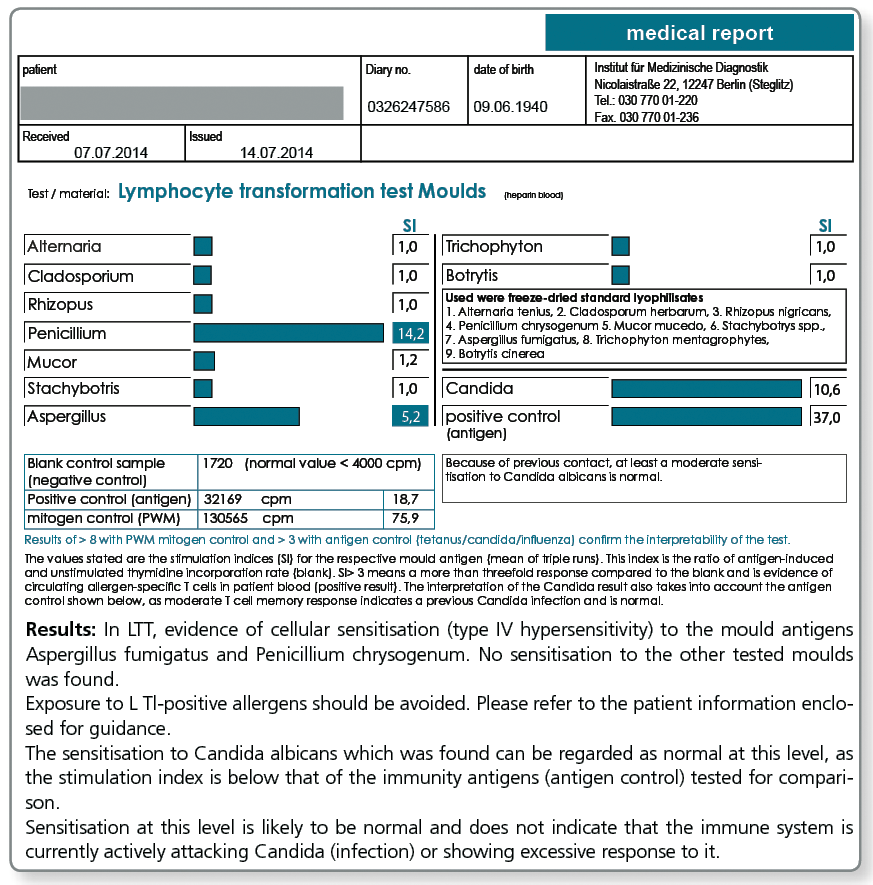Moulds
Use of the LTT to detect type IV sensitisation to moulds
Moulds grow in all moist and warm locations or where plant materials are present that they can use as a source of energy. Unlike plants, moulds do not have any chlorophyll and therefore cannot obtain their energy from sunlight.
Moulds are made up of a cellular mesh known as the hyphae, which first colonise the surface of the materials and later penetrate deeper. After longer periods of colonisation, the ‘energy sources’ they live off are destroyed: building materials and wallpapers are broken down, wood and paper crumbles, plaster and paints peel off.
Another typical source of energy is potting mixture or the dead parts of pot plants as well as food items.
Like all living organisms, fungi also need water to grow. However, if water is missing the fungi does not die, but instead forms so-called “persistent cells”. These enable the fungi to survive “periods of stress”. With the return of more favourable growth conditions (humidity), the fungi start growing again. The spores (seeds), which are used for reproduction are microscopically small. They float in the air and are either breathed in or ingested with food. They can cause allergies if an individual is sensitised to them.
Many of the approximately 10,000 known mould species are exceptionally potent allergens, although only a few of these are found indoors or in the immediate living environment of patients (garden compost, organic waste, etc.).
The most important fungi present in living environments are the genera Alternaria, Aspergillus, Cladosporium, Stachybotrys, and Penicillium.
If there is an allergic sensitisation (high stimulation index in the LTT or detection of IgE antibodies) to one or more of these moulds, it is important to avoid exposure. The general therapeutic management includes first and foremost avoiding contact with the allergen which requires stringent removal of all allergen sources.

